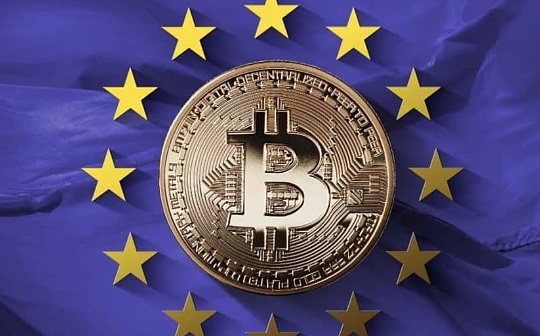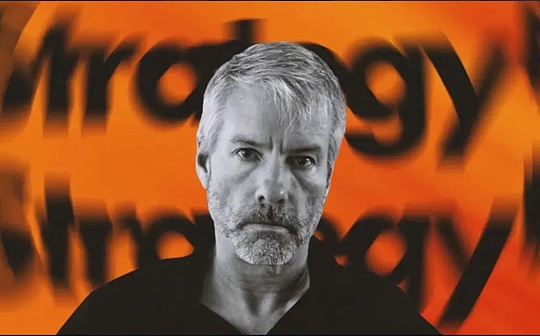
Author: Alys Key, Translation: Shawna zhou, The Seedao
01 What is Mica?
Background introduction: Markets in Crypto Assets (MICA) is a laws and regulations proposed by the European Union to regulate and regulate the encrypted asset market.Mica first appeared in a European Commission’s proposal in September 2020, which was part of the EU’s digital financial strategy.Mica’s goal is to establish a unified laws and regulations in Europe to ensure the stability, transparency and legal operation of the digital asset market.
The main points of MICA regulations include:
1. Registration and supervision: MICA stipulates that Crypto-Asset Service Provers needs to be registered and is regulated by the European market regulatory agency.This includes supervision of encrypted exchanges, digital asset wallet providers, and some first -issued token providers.
2. Transparency: Regulations require the transparency of the digital asset market, including requiring detailed white paper and information disclosure.
3. Investor protection: MICA focuses on protecting the rights and interests of investors, including the stipulation of anti -money laundering (AML) and understanding your customers (KYC), as well as investor risk warnings.
4. Market order: Regulations try to ensure the order of the digital asset market, including a blow to manipulating the market and fraud.
After more than two and a half years of discussion and adjustment, the European Union seems to be preparing to pass this milestone cryptocurrency regulations.
This new set of new regulations is expected to vote on April 17.
The Crypto Asset Market (MICA) is part of the European Union’s larger plan, which aims to update the blockchain method of the alliance in several digital finance frontiers.Mica itself focuses on crypto asset providers and its application obligations to perform.It also sets strict requirements on stable coins operators.
However, the most important thing is that it unifies the method of 27 member states.
However, this month’s voting is far from the end of the story.
If members of the European Parliament approve these changes, countries will have 18 months to implement them.Mica’s specific application details will be resolved by EU securities regulatory agency ESMA.
However, this is not only a major milestone in the European encryption field, but also an important event in the world.
If a company headquartered in other countries wants to provide services to EU customers, it will also be affected, and the financial commissioner Mairead Mcguinness is enthusiastic about sharing ideas for sharing ideas with the United States in his speech.
“This is very political,” said Marina Markezic, co -founder and executive director of the European Encrypted Initiative.The organization is an industry group established to respond to Mica’s proposal.”Brussels believe that they are developing very good standards, and ideally, these standards will be extended to other jurisdictions -this is the Brussels effect.”
02 Europe began to supervise the “encrypted asset service provider”
A series of regulations formulated by MICA are suitable for companies related to a broad category industry. This industry is called “Crypto Asset Service Provers (CASP).
This includes companies that have various activities from operating trading platforms, providing asset storage to promoting new assets, and providing encryption consulting.
According to MICA, any institution that wants to openly provide encrypted assets needs to make a white paper that discloses relevant information.It will include information about the issuer or the entity that wants it to introduce it to the transaction. What will be raised for what will be used for what will be used for, what is the rights or obligations related to assets, and what its underlying technology is.
They also need to frankly explain the potential risks that investment may face.
In some cases, CASP responsible for making this white paper may be the issuer of assets; in other cases, it may be a trading platform for customers to provide the asset.
Many people in the field of encryption are no stranger to the White Paper, but Sam Tyfield, a corporate merger of the British law firms, said that the EU’s regulations will enforce a stricter and standardized method.
According to Tyfield’s modification and extension of a draft white paper case in nominal experience in MICA, he said that “the amount of information and data required to do this is largely exceeded the current conventional practices of the current white paper, and most of them are mostly for most.Potential crypto assets or token issuers are a major challenge.
He told Decrypt: “This is not a bad thing, because this may lead to some unreliable crypto asset issuers withdraw the project.”
Anne-Sophie Cissey, the legal compliance director of Flowdesk, France, agrees.
As a person from the traditional financial background, she believes that this is equivalent to the rigorous standards applicable to equity.She said: “I know how people raise funds, just say” good. This is a good prospect. As long as we give us money, everything can be better, but they have no plan. With MICA, we will have this information.”
However, what she does not want to see is the gradual breeding parent management.”But I am not worried about Mica itself, but the use of MICA, or what they do in the United States. They want to protect investors from harm.” Cissey said: “We are adults, we can make a decision decision”” “
03 MICA’s regulations on stable currencies and NFT
Another important part of MICA regulations is to strengthen the regulations for stable currency.According to these proposals, issuers need to maintain asset reserves that support tokens.These assets must be isolated from their own assets and invest in low -risk ways.EU legislators have also left a space for large -scale stable currency issuers to accept stricter regulations, such as higher capital requirements.
However, these regulations will not affect the central bank’s digital currency (CBDCS), and CBDCS is exempted.Observer has long pointed out that the origin of MICA regulations is to respond to Facebook’s current DIEM (officially referred to as libra) projects, which stems from concerns about the progress of a non -governmental currency in the region.
Shortly after the first proposal was proposed, Wolf-Georg Ringe, director of the Institute of Law and Economics of the University of Burger University, said in an article: “Read it carefully, the proposal shows concerns about losing monetary sovereignty to private actors, and it is not a coincidence.After a few days after the committee’s proposal was released, the European Central Bank (ECB) initiated the proposal of its digital euro. “
A significant exception in MICA regulations is NFT.
It is clear that the requirements for formulating white paper are not applicable to “unique and irreplaceable assets, including digital art and collectibles.”
However, the further clarification of the document caused such a possibility, that is, “assets issued in large -scale series or collection” may be considered replacement.Experts have proposed that this may affect large -scale projects such as Bored Apes Yacht Club (Bayc) and Cryptopunks, which affect their unique statements.
This is one of the issues that may be clarified by ESMA’s guidelines.
MICA regulations also exclude other aspects of digital finance, but some people hope that these aspects may be considered in future versions or other regulations.
“Since the MICA draft drafted, many technologies have emerged, the most prominent of which is Staking,” Nick Taylor, the public policy director of the encrypted exchanges, commented: “More and more encrypted companies are considering that they are now considering that they are considering itIncluding its value proposal and steering the pledge mechanism, the guidelines for its use have not been clearly stipulated in MICA.
Some high -level institutions in Europe have determined the limitations of the regulations.Last week, a member of the European Central Bank Advisory Committee said that the recent progress of regulations was not enough.
In a blog post, Elizabeth Mccaul, a member of the European Central Bank Supervisory Board, said that companies such as Binance and now closed FTX may not be regarded as “important” in the current form.Not just their existence in the European Union.
04 “Unbearable” due to the following regulations
“I think they may not have financial ability, and there are not enough manpower to perform their obligations. We may see that some of them will basically be crushed by this situation.”
Flowdesk’s Cissey said her company “90%” in preparing to meet MICA.But she suspected that any new company may choose elsewhere when it was started.”If I want to start a new project, I will choose to conduct on the BVI, Cayman Islands or Bahamas,” she said.
Dalon Seymour, the technical director of the Anderson Law Firm, said that the situation of this “regulatory choice” may have occurred.He said: “Especially for some small companies, in general, like any small company, the supervision applied to them may be quite difficult. They do need to cooperate with regulatory lawyers, and this is not cheap.”
However, the positive side is that the unified method will provide opportunities for any company that can cope with new regulations.
Once a country is authorized, it can be accepted in the entire EU market.
“I would say that the best part of Mica said the best part of Mica provided the opportunity to enter the entire EU market. Now among all member states, the situation is very different. Some countries have some regulations, and some countries do not have it.Compliance is very difficult. For larger companies, a unified European solution can provide more.
PRZEMYSLAW KRAL, the CEO of the Polish encryption exchange, holds a similar optimistic attitude.”Although MICA will undoubtedly challenge some smaller encrypted startups, I expect the overall effect will be positive,” he said.
KRAL said: “MICA provided by MICA’s clarification and certainty is attractive to institutional investors and larger companies, which prompts the encryption market in Europe to increase investment and growth opportunities.”








